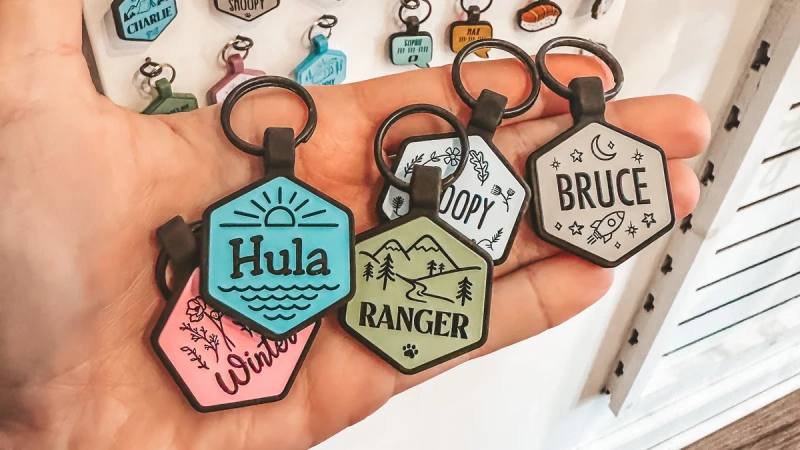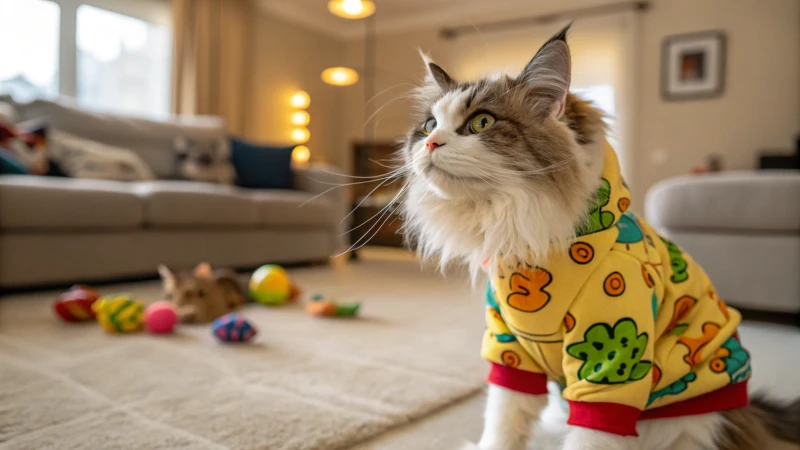
Ever wondered if your cat can rock those cute dog outfits you’ve seen?
Cats can wear dog clothes, but it’s essential to ensure the fit is appropriate and that the cat remains comfortable. Due to differences in body shape, dog clothes may not suit cats well, potentially causing stress or restricting movement. Always prioritize the cat’s comfort and well-being when considering such attire.
While it might seem fun or practical to dress your cat in dog clothing, understanding the nuances of fit, comfort, and purpose is crucial. Keep reading to discover how to ensure your feline friend’s experience is both enjoyable and stress-free.
Cats can comfortably wear dog clothes.False
Dog clothes may not fit cats well due to different body shapes.
Dog clothes can restrict a cat's movement.True
Improper fit can cause stress or restrict a cat's natural movement.
How Do Cats React to Wearing Clothes?
Ever wondered if your cat secretly dreams of a wardrobe like yours? Let’s dive into how our feline friends really feel about donning those adorable outfits.
Cats generally react to wearing clothes with discomfort or stress. While some might tolerate it, most cats find clothing restrictive and unsettling due to limited movement and grooming. Observing your cat’s behavior is essential.
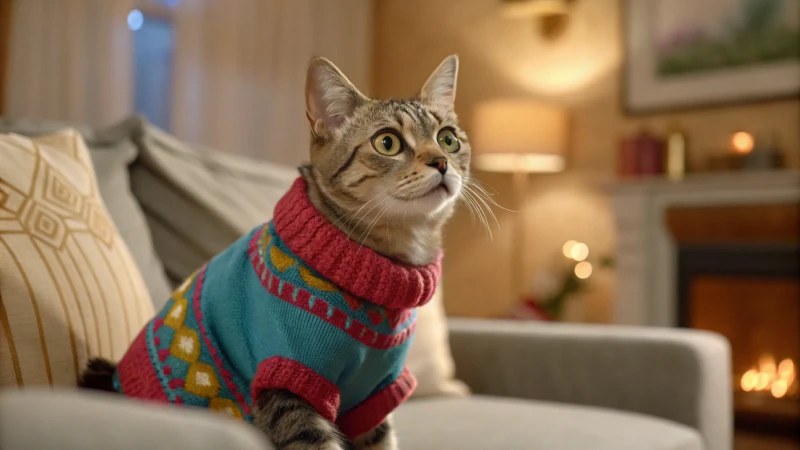
Understanding Cat Behavior with Clothing
I’ve always been curious about how my cat, Whiskers, would react to wearing clothes. Cats are naturally independent and, let’s face it, a bit particular about their routines. From my experience, putting clothes on a cat can be like trying to convince them that bath time is fun—nearly impossible!
Common Reactions
-
Discomfort and Stress
- Imagine wearing a scratchy sweater you can’t take off. That’s how your cat might feel. I once tried a tiny sweater on Whiskers, and he immediately started trying to shake it off.
-
Changes in Behavior
- If you notice your kitty skipping meals or avoiding the litter box, it might be their way of saying, "This outfit is not for me!" Whiskers became a bit of a recluse after his sweater ordeal.
-
Physical Reactions
- Restricted movement means less playtime and possible minor injuries. I’ve noticed that even a seemingly harmless outfit can cause fur matting if left on too long.
Factors Affecting Reactions
| Factor | Impact |
|---|---|
| Fit & Size | Ill-fitting clothes can restrict movement |
| Material | Rough fabrics may irritate sensitive skin |
| Temperature | Overheating is a risk if the clothing is heavy |
Observing and Responding to Your Cat’s Needs
- Monitor Reactions: Always keep an eye on your feline fashionista. If they seem distressed, it’s best to call it quits on the outfit.
- Short-Term Use Only: Consider clothes for specific situations like chilly weather but keep it brief.
- Consult a Vet: I found that talking to a vet can provide peace of mind when you’re unsure about your cat’s reaction.
Alternatives to Clothing
If you’re like me and want to keep your cat cozy without the drama, heated pads or snuggly beds work wonders. These options let your cat stay comfy while preserving their dignity—and sanity!
Exploring cat clothing alternatives1 can also lead to discovering great products that ensure safety and comfort for our beloved pets. So, before turning your cat into the next fashion icon, remember to prioritize their happiness and well-being.
Cats enjoy wearing clothes for extended periods.False
Cats generally dislike clothing due to discomfort and stress.
Clothing can cause stress in cats.True
Cats may show signs of stress, such as hiding or aggression.
What Are the Key Differences in Body Shape Between Cats and Dogs?
Have you ever watched a cat leap effortlessly from a high perch while your dog huffs along the ground, and wondered why they move so differently?
Cats have sleek, agile bodies with retractable claws for stealth, whereas dogs are more robust, with non-retractable claws built for strength and endurance.
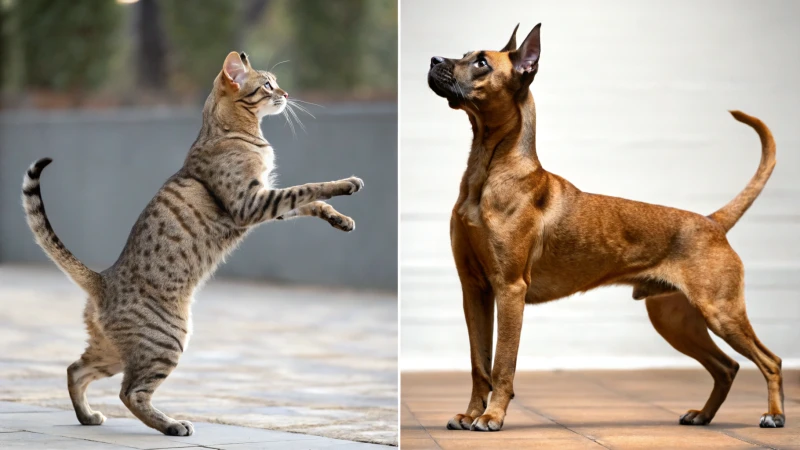
Understanding Skeletal Structures
I remember watching my cat, Whiskers, twist in mid-air like a gymnast, landing gracefully on her feet. This ability comes from her flexible spine, designed for such acrobatics. Cats’ spines are like nature’s springboard, allowing them to dart and climb with ease. Their retractable claws2 are perfect for sneaking up on unsuspecting prey—or my feet at 3 a.m.!
Dogs, on the other hand, remind me of my old family dog, Max, who had the endurance of a marathon runner. With his broad chest and solid frame, Max was built to keep going, whether chasing after squirrels or joining us on long hikes. Unlike Whiskers, Max’s non-retractable claws gave him a sturdy grip on any surface he dashed across.
Musculoskeletal Differences
When I think about the times Whiskers would crouch before pouncing on a toy mouse, her powerful hind legs come to mind. Cats are sprinters by nature, relying on short bursts of speed to catch their prey or playfully ambush a passing friend.
Dogs like Max, however, are like the marathon runners of the animal world. Their muscles are more about endurance, ideal for those long runs at the park or playing fetch until your arm is sore. Breeds like Greyhounds take this to the extreme, built for speed over distance rather than short sprints.
| Feature | Cats | Dogs |
|---|---|---|
| Spine Flexibility | Highly flexible for twisting and turning | Generally less flexible |
| Claw Type | Retractable | Non-retractable |
| Muscle Arrangement | Suited for short bursts of speed | Suited for endurance |
| Chest Structure | Narrower facilitating agility | Broader supporting lung capacity |
Adaptations for Environment
Each time Whiskers would slink quietly through the house, it reminded me of how cats are solitary hunters by nature. Their bodies are perfectly crafted for silent movement and unexpected leaps. This stealth3 is vital for a hunter that relies on surprise.
In contrast, dogs like Max seem to thrive in social settings. Many breeds were designed for teamwork—whether herding sheep or hunting in packs. Their anatomy supports group activity and stamina aligning with their historical roles as loyal companions and hard workers.
Cats’ nimble frames make them adept at climbing—a trait stemming from their tree-dwelling ancestors. Meanwhile, dogs often showcase their strength in swimming or digging depending on their breed’s unique history and tasks. It’s fascinating to see how these differences manifest in our everyday interactions with them.
Cats have retractable claws for silent stalking.True
Cats' retractable claws help them move silently, aiding in hunting.
Dogs have more flexible spines than cats.False
Cats have more flexible spines, allowing them to twist and turn easily.
When is it appropriate for cats to wear clothing?
Ever tried dressing up your cat, only to watch them wriggle free in a flash? Cats and clothes can be a tricky mix, but sometimes it’s necessary.
Cats should wear clothing only when it’s truly needed, like for warmth, medical reasons, or brief special occasions. Always make their comfort a priority and watch for any signs of stress or discomfort.
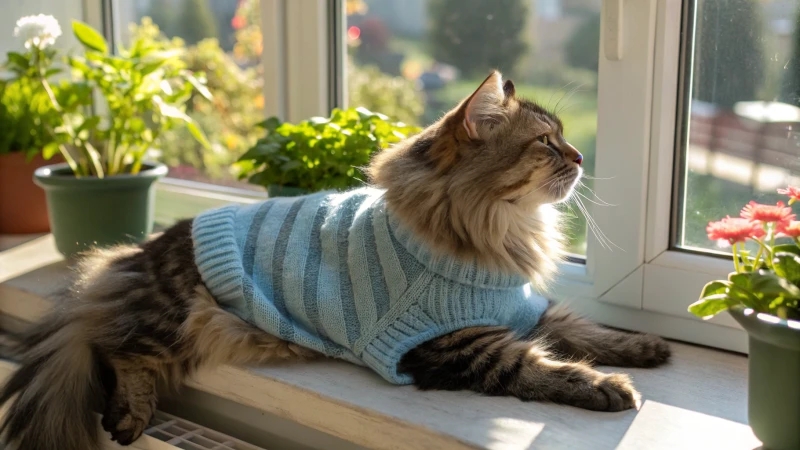
Functional Needs for Cat Clothing
I’ve always found the idea of a cat in a sweater irresistibly cute, but the reality is that clothing should serve a functional purpose4. For instance, hairless breeds like the Sphynx might need a little extra warmth during chilly months. It’s not just about looking adorable; it’s about making sure they’re snug and comfortable. Once, I tried putting a little hoodie on my friend’s Sphynx, and to our surprise, the cat seemed to revel in the warmth.
| Cat Type | Clothing Use |
|---|---|
| Hairless Breeds | Warmth |
| Post-Surgery | Protection & Recovery |
| Special Events | Photoshoots & Occasions |
Observing Cat Behavior with Clothes
The first time I tried dressing my cat, it was a bit of an adventure. She attempted every yoga pose imaginable to wriggle out of the sweater. That was a clear sign she wasn’t having it! Monitoring your cat’s behavior is key when introducing clothing. Signs of discomfort, such as attempting to remove the outfit or excessive grooming, indicate that the clothing may not be comfortable5.
It’s all about their body language. If they seem relaxed and go about their usual antics, great! But if they’re agitated or stressed, better safe than sorry—off it goes.
Evaluating the Purpose of Clothing
Sometimes clothes are necessary, like when covering up after surgery. In these cases, the clothing acts as a protective layer. For fun occasions like holiday photoshoots or special events6, I’ve found it best to keep the outfit on just long enough for a quick snap. Any longer, and it’s a recipe for kitty crankiness.
Ultimately, it boils down to whether the reason for dressing up outweighs any potential discomfort for your feline friend. Each cat is different, and understanding their individual needs will guide you in deciding if clothing is right for them.
Hairless cats need clothing for warmth.True
Hairless breeds like the Sphynx require extra warmth in cold climates.
All cats enjoy wearing clothes for photoshoots.False
Not all cats enjoy clothing; some may find it stressful or uncomfortable.
How Can You Ensure Your Cat Is Comfortable in Clothes?
Ever thought about dressing up your cat in adorable outfits but worried they might not be comfy? Let’s explore how to keep your furry fashionista cozy and happy!
To ensure your cat is comfortable in clothes, start by picking the right size, introduce garments gradually, and pay close attention to their comfort cues. Their ease and happiness should always come first.
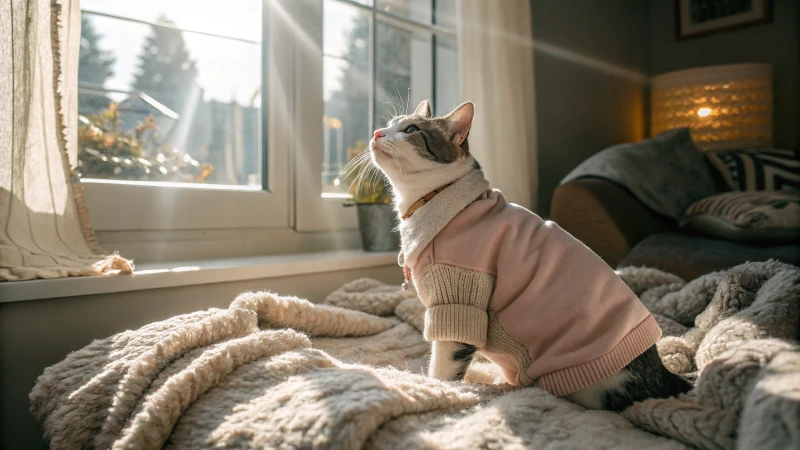
Choosing the Right Fit
Getting the fit just right is like finding the perfect pair of jeans — it makes all the difference! I remember the first time I tried dressing my cat, Whiskers, in a cute sweater. It was a bit too snug, and the poor thing looked like a furry sausage! Lesson learned: measuring matters.
- Measure Before Purchase: Grab a tape measure and note down your cat’s neck girth, chest size, and back length. It’s a mini workout session that saves a lot of hassle later.
- Compare with Size Charts: Don’t just eyeball it — check the size chart for each brand. They’re like snowflakes: no two are exactly alike.
- Opt for Cat-Specific Apparel: Cats aren’t just tiny dogs. Their bodies are more like agile ninjas, so look for brands that get this feline finesse.
Introducing Clothes Gradually
Cats are routine lovers, and changing things up can be like switching their favorite tuna with broccoli. Here’s how I eased Whiskers into his fashion debut:
- Start Small: Begin with something simple, like a tiny bandana or hat, and see how they react.
- Short Intervals: Initially, let them wear the item for a few minutes only, extending the time as they get used to it.
- Positive Reinforcement: Treats and cuddles work wonders! Reward your kitty each time they wear clothes without fussing.
Monitoring Your Cat’s Reactions
Paying attention to your cat’s signals is key. Whiskers taught me this when he started giving me the cold shoulder — literally turning his back on me.
- Watch for Stress Signals: Be on the lookout for excessive grooming or if they look stiff and awkward.
- Adjust if Needed: If they seem off, tweak the fit or go for softer materials. Comfort is king!
| Signs of Comfort | Signs of Discomfort |
|---|---|
| Normal grooming | Excessive grooming |
| Relaxed posture | Stiff or awkward movement |
| Normal eating and drinking | Avoidance of food or water |
Understanding the Purpose
While playing dress-up is fun, it’s important to know why you’re doing it. Sometimes it’s practical — like keeping a Sphynx warm in winter. I remember doing a quick photoshoot with Whiskers in a little Santa suit; it was short-lived but oh-so-cute!
- Seasonal Needs: Consider breathable fabrics for summer and snug ones for winter.
- Short-Term Use: If it’s just for an event, keep it brief and stress-free.
For more insights on the benefits of appropriate clothing7 for cats, check out expert tips to ensure a happy experience for both you and your feline friend.
Utilizing Quality Materials
The material makes a huge difference — think about how scratchy wool would feel versus soft cotton.
- Breathable Fabrics: Choose materials that allow air circulation to prevent overheating.
- Avoid Allergens: Be mindful of any allergies your cat may have.
Explore material safety guidelines8 for pets to make informed decisions about what works best for your feline companion.
Cat-specific clothes ensure a better fit than dog clothes.True
Cats have unique body shapes, so cat-specific clothing fits better.
Cats can wear clothes for long periods without stress.False
Cats may get stressed if clothes are worn for extended periods.
Conclusion
Cats can wear dog clothes, but proper fit and comfort are crucial. Ill-fitting garments may cause stress or restrict movement, so monitor your cat’s reactions closely.
-
Explore various alternatives to clothing that can provide warmth and comfort for cats. ↩
-
Learn how cats’ spine flexibility aids their movement and agility, crucial for their predatory lifestyle. ↩
-
Discover how cats’ body shapes contribute to their stealth abilities, making them effective hunters. ↩
-
Understand why hairless breeds like Sphynx cats might require clothing, especially in cold environments. ↩
-
Learn about signs indicating your cat is stressed or uncomfortable wearing clothing. ↩
-
Explore guidelines on dressing cats for short-term events like photoshoots. ↩
-
Discover expert tips on why dressing cats appropriately can be beneficial, including insights on comfort and practical uses. ↩
-
Learn about safe and suitable materials for cat clothing to ensure your pet’s comfort and well-being. ↩


